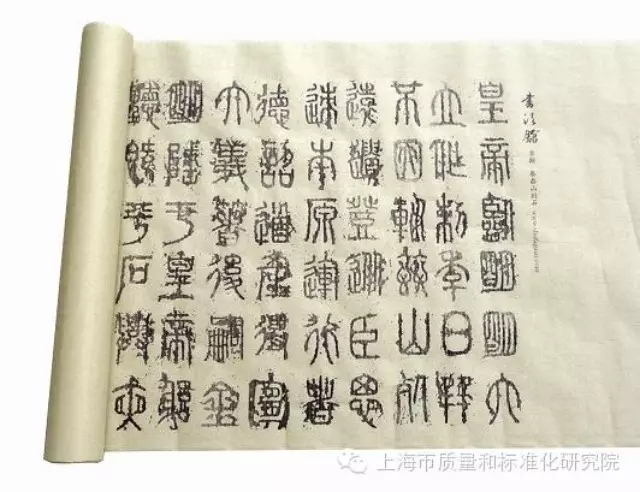马上注册,结交更多好友,享用更多功能,让你轻松玩转社区。
您需要 登录 才可以下载或查看,没有账号?免费注册用户名
×
【画中有话】实用与艺术的平衡——雅俗共赏的唐代“正字”(上) 2014-11-11 [url=]上海市质量和标准化研究院[/url]
3 d+ v4 T z- g6 o3 }* ~
7 g9 f# Z4 H! B4 j$ w% T作为书法的载体和造型基础,从殷商至今,有据可考的汉字历史已超过三千年,其由异而同、由繁而简的漫长演进过程就是一部汉字持续规范化和标准化的历史。 The Chinese character, a carrier to convey the spirit of calligraphy, has witnessed a history of over 3,000 years since the Shang Dynasty. The standardization of the Chinese character is reflected in the unification and standardization of the character patterns. 有研究指出,中国历史上的秦、汉、唐和明清等时期,曾先后出现四次大规模汉字规范和统一运动,留下了“书同文”、《熹平石经》、“正字学”运动和“馆阁体”等人文盛举。其间,除了秦代“书同文”以王朝力量强制推行标准字体外,后三次均为官民并举,而其中唐代“正字学”更被誉为中国历史上最大规模的汉字规范化运动。 Researchers have found that there were four grand movements of Chinese character standardization, respectively marked by the “unifying of characters” during the Qin Dynasty, the Stone Carvings of Confucian Classics during the Period of Xiping in the Han Dynasty, the promotion of orthography during the Tang Dynasty, and the adoption of standardized characters for official use during the Ming and Qing Dynasties. The “unifying of characters” during the Qin Dynasty was imposed by the government, yet the latter three movements had won governmental and non-governmental supports, among which the promotion of orthography during the Tang Dynasty was hailed as the most prominent in terms of scale. 在那个“公私仓廪俱丰实”的鼎盛时代,人们秉承宽容精神,围绕确定汉字标准字体,开展了大规模汉字规范化学术活动,涌现出“从俗”与“从古”两个学派。“民俗派”颜元孙,久思而著《干禄字书》,从名与实、体与用角度,将汉字字体分为正体、通体和俗体三类,分别用于官文应试、行文记录和日常生活;“经典派”张参,承诏编篡《五经文字》,明确提出以是否被《说文解字》、《字林》或《经典释文》等经典收录为标准,判断正字与讹字。 That was an abundant era in which the spirit of tolerance prevailed. There appeared two schools of thought during the standardization movement of Chinese characters—one advocates the vulgarization of characters and the other the return to the classical patterns. The former school was led by Yan Yuansun, who took pains before accomplishing the Book of Characters for Officials. It includes three types of characters, respectively for official exams, documenting, and daily life. Zhang Shen, representative figure of the latter school, edited Words from the Five Classics, according to which whether or not a character was correct depended on its inclusion into such classics as Annotation of Explaining Article and Interpreting Words, Zilin (Collection of Words), and Interpreting of Classical Works.
+ L/ M) W' g3 h" t5 ~0 ~6 K+ _- O) P2 H5 C8 |. U" m
( H* e( H. P3 P& g- A- x: x# q" j5 D( u
|